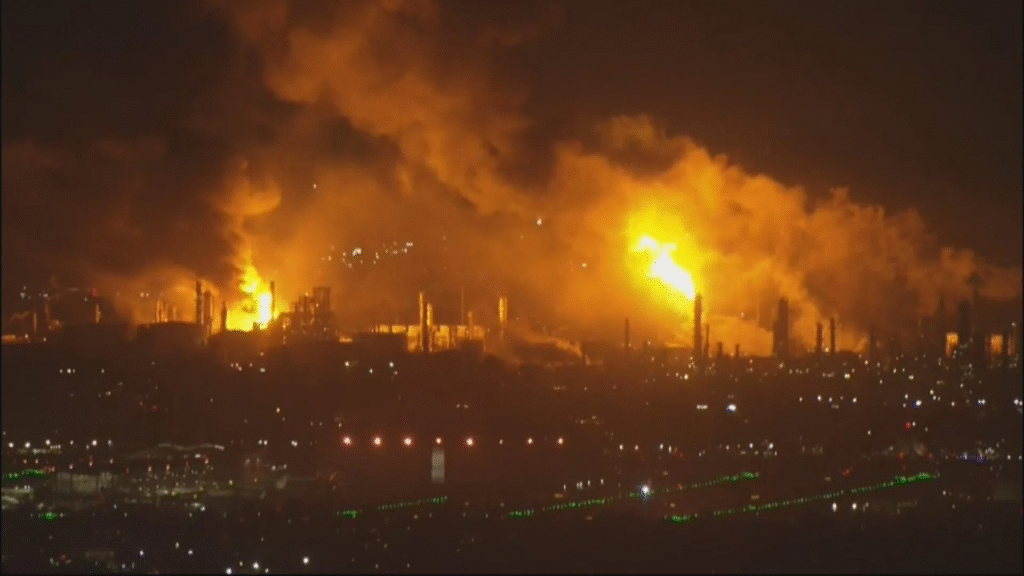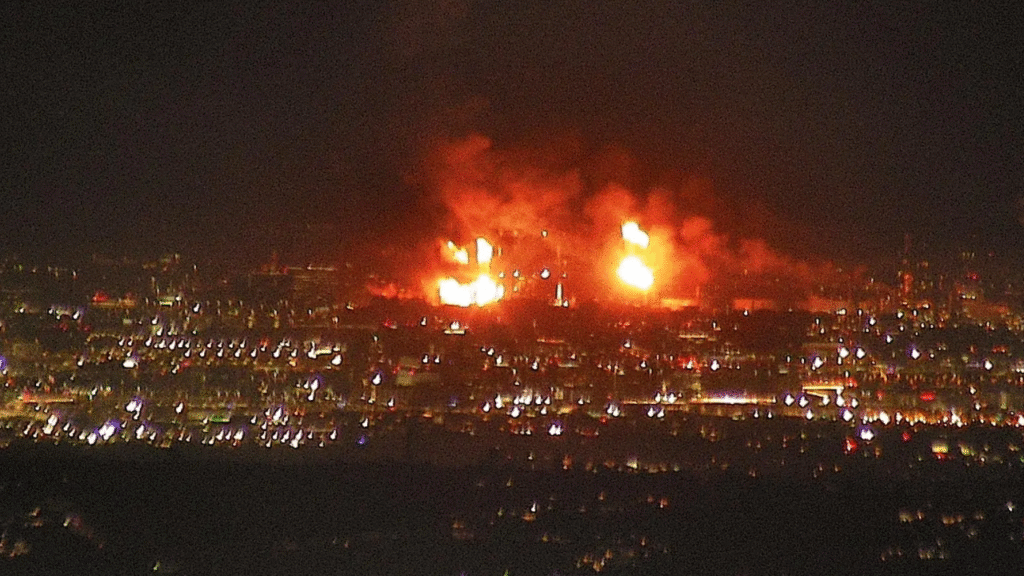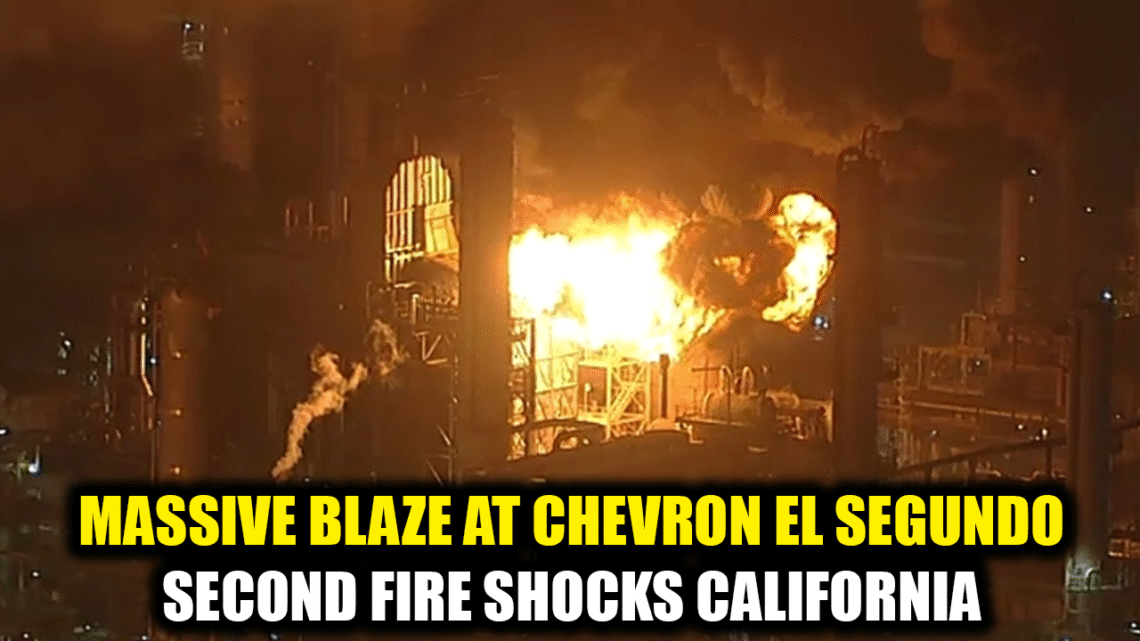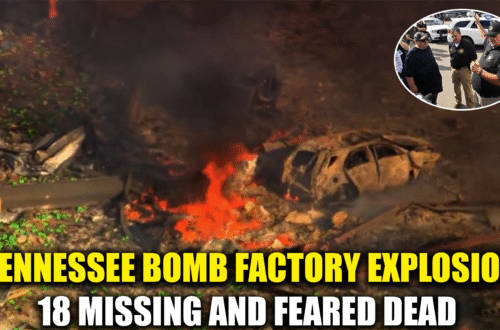On the night of October 2, 2025, a massive blaze erupted at Chevron’s El Segundo refinery in Los Angeles County. Flames shot high into the sky, and thick smoke spread across the South Bay area, startling residents and prompting emergency responses. Dubbed the “Chevron El Segundo Blaze,” this incident has quickly become one of California’s most talked-about industrial fires of the year.
The fire was powerful enough to be seen from miles away. Residents described the scene as surreal, with some reporting loud explosions and a bright orange glow that lit up the horizon. Thankfully, despite the dramatic visuals, no injuries were reported, and the fire was largely contained to a specific section of the refinery. Still, the event raised questions about safety, emergency response, and the broader impact of industrial operations in densely populated areas.

Understanding the Chevron El Segundo Blaze
The Chevron El Segundo refinery is one of the largest on the West Coast. It processes hundreds of thousands of barrels of crude oil daily, producing gasoline, diesel, and jet fuel. Fires at such facilities are not uncommon, but the intensity of this blaze shocked the local community.
Experts note that refinery fires can result from a variety of factors, including mechanical failures, chemical reactions, or human error. Even a small leak or malfunction can escalate quickly when volatile substances are involved. The Chevron El Segundo Blaze highlights how quickly industrial risks can transform into emergencies.
How Refinery Fires Happen
Industrial fires often follow predictable patterns:
- Equipment Malfunction: Pumps, valves, and pipes carry flammable liquids under high pressure. A malfunction can create sparks or leaks.
- Human Error: Mistakes during maintenance or operational adjustments can trigger ignition sources.
- Chemical Reactions: Some refinery processes involve highly reactive chemicals. A small imbalance can escalate into a fire.
Understanding these causes is critical for both refinery management and emergency responders. Learning from past incidents helps prevent future disasters.
Community Impact and Response
The Chevron El Segundo Blaze had a direct effect on nearby communities. Residents were advised to stay indoors, and traffic was diverted around the refinery to ensure public safety. The local fire department responded immediately, containing the blaze before it could spread further.
One resident shared, “It was terrifying. You could see the fire from my living room window, and the air smelled like smoke for hours.” Despite the fear and disruption, the lack of injuries was a positive outcome, highlighting the importance of emergency preparedness and rapid response.
Tips for Residents Near Industrial Sites
If you live near large industrial facilities, following safety strategies is essential:
- Stay Informed: Sign up for local alerts and notifications from emergency services.
- Emergency Kit: Keep a kit with water, masks, flashlights, and basic first-aid supplies.
- Evacuation Plan: Know your escape routes and safe meeting points.
- Indoor Safety: Close windows and doors during a nearby fire to avoid inhaling smoke.
Real-life examples show that communities with prepared residents experience fewer injuries and less panic during industrial accidents.
Lessons for Industrial Safety
The Chevron El Segundo Blaze offers lessons beyond the immediate community:
- Regular Maintenance Matters: Equipment checks can prevent mechanical failures.
- Training is Critical: Workers trained in emergency response can act quickly to contain hazards.
- Transparency Saves Lives: Prompt communication with the public reduces confusion and anxiety.
Companies that prioritize safety culture and continuous training are less likely to face large-scale disasters.
Case Study: Fire Prevention in Refineries
Consider a refinery in Houston that implemented strict safety protocols after a minor fire in 2020. The measures included daily equipment inspections, automated fire suppression systems, and emergency drills. Two years later, when a similar incident occurred, the fire was contained within minutes, and no one was injured.
This example underscores the importance of proactive strategies in reducing risks in industrial environments.
Conclusion
The Chevron El Segundo Blaze is a stark reminder of the risks inherent in industrial operations. While no injuries occurred, the fire disrupted local communities and raised concerns about refinery safety. It also provides valuable lessons for both residents and companies in preparing for emergencies.
As investigations continue, the focus remains on understanding the cause, preventing future fires, and ensuring that communities near industrial sites are protected. Awareness, preparation, and stringent safety measures can transform potential disasters into manageable incidents.
FAQs
1. What caused the Chevron El Segundo Blaze?
The exact cause is still under investigation, but potential factors include equipment failure, human error, or chemical reactions.
2. Were there any injuries reported during the blaze?
No injuries were reported. Emergency protocols and quick response helped prevent harm.
3. How did the fire affect local communities?
Residents were advised to stay indoors, and traffic was redirected. Some experienced smoke and disruption, but no evacuations were necessary.
4. How can residents stay safe near industrial sites?
Stay informed through alerts, maintain emergency kits, know evacuation routes, and avoid outdoor exposure during fires.
5. What lessons can companies learn from this incident?
Prioritize regular maintenance, train staff for emergencies, and communicate promptly with the public.






